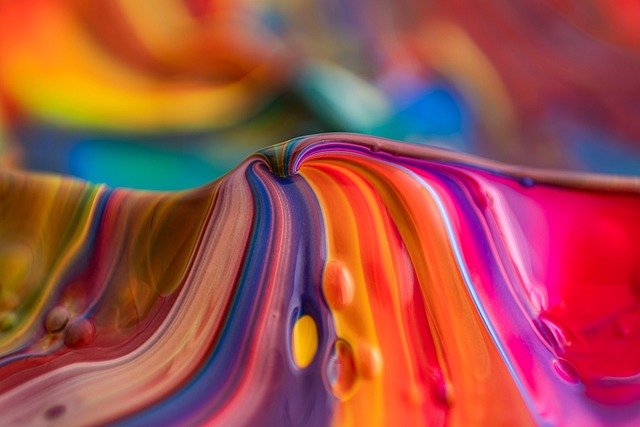You know that feeling? You’ve spent weeks poring over paint chips. You’ve finally chosen what you’re sure is the one—the perfect shade of gray, blue, or greige that will transform your living room into a sanctuary. The painters do a flawless job. You stand back to admire their work… and your heart sinks.
It’s too blue. Or it looks nothing like it did on the tiny swatch. Or in the morning light, it has this weird green undertone that makes you feel like you’re living inside a pea soup can.
Trust me, I’ve been there. And I’ve consoled countless clients who’ve been there too. The good news? Every single one of these paint palette purgatories is completely preventable. The bad news? Most people skip the one step that every single expert—from the Brian Deans of interior design to the grizzled veterans holding the paintbrush—swears by.
Let’s break down the most common mistakes to avoid when choosing a paint color for your home’s interior, so your next project ends in a victory dance, not a do-over.
Table of Contents
- The Cardinal Sin: Not Testing Paint Samples In Your Space
- Ignoring the Light: How Natural & Artificial Light Warp Color
- The Undertone Trap: The Hidden Color That Ruins Everything
- Forgetting the Room’s Vibe: Why Your Bedroom Shouldn’t Be an Energizing Yellow
- Neglecting the Fixed Elements: Clashing With Floors & Countertops
- Picking the Color First (It Should Be One of Your Last Choices)
- Overlooking the Finish: How Sheen Changes Everything
1. The Cardinal Sin: Not Testing Paint Samples In Your Space
Here’s the single most credible piece of advice you’ll get from any pro: You must test paint samples on your actual walls. This isn’t a suggestion; it’s a non-negotiable commandment.
Think of a paint chip as a single word. It has a meaning, sure. But you need to see that word in the full sentence of your room—with its unique light, its specific shadows, and its existing furniture—to truly understand its meaning.
A small 2×2 inch swatch cannot compete with the vast canvas of an entire wall. Colors intensify, shift, and reveal their true personalities when amplified. That soft, inviting beige you fell in love with at the store can easily morph into a blinding, overwhelming yellow once it’s covering 400 square feet.
How to do it right:
Buy small sample pots of your top 2-3 choices. Paint a large swatch (at least 2×2 feet) on multiple walls in the room. Observe it for at least 48 hours. See how it looks in the brutal honesty of the midday sun, the warm glow of the evening, and under your artificial lights at night. Live with it. This is the cheapest insurance policy you’ll ever buy for a painting project.
2. Ignoring the Light: How Natural & Artificial Light Warp Color
Light is the ultimate puppeteer of color. It plays with it, changes it, and can make it utterly unrecognizable from one moment to the next. This is why a color can look perfect in your north-facing living room and atrocious in your south-facing bedroom.
- North-Facing Rooms: Receive cooler, bluer light. This light tends to emphasize cool undertones (blues, greens, grays) and can make a room feel chilly. To counteract this, experts often recommend warmer colors with yellow or red undertones to add coziness.
- South-Facing Rooms: Blessed with warm, yellow light throughout most of the day. This light amplifies warm tones (yellows, reds) and can sometimes make them look brighter. You can get away with cooler colors here as the light will balance them out.
- East-Facing Rooms: Get warm, yellow-red light in the morning and cooler blue light in the afternoon.
- West-Facing Rooms: Have cooler light in the morning and intense, warm light in the late afternoon and evening.
And let’s not forget artificial light! LED, halogen, incandescent, and fluorescent bulbs all have different color temperatures (measured in Kelvins), which will drastically alter your paint color after the sun goes down.
3. The Undertone Trap: The Hidden Color That Ruins Everything
This is the ninja of paint mistakes—silent, invisible, and capable of total destruction. Every color, even pure white, has an undertone. It’s the subtle, underlying color that gives the main color its character.
The problem arises when the undertones in your paint clash with the fixed undertones already in your room. That sleek gray quartz countertop with cool blue undertones will scream in agony if paired with a warm, beige-gray wall color with yellow undertones. They will never, ever get along.
How to spot an undertone: The best trick is to hold your paint chip up to a pure white background or compare it to other colors in the same family. Does your gray look a little purple next to a truer gray? Does your off-white seem peachy compared to a bright white? That’s the undertone talking.
4. Forgetting the Room’s Vibe: Why Your Bedroom Shouldn’t Be an Energizing Yellow
Color psychology isn’t just fluff; it’s real. We have visceral, emotional responses to color. Choosing a paint color based solely on what’s trendy without considering the room’s function is a classic error.
- Bedrooms & Bathrooms: Should generally be sanctuaries for relaxation and calm. Opt for soothing, serene colors like soft blues, gentle greens, serene lavenders, or warm, neutral tones.
- Home Offices & Kitchens: Often benefit from energizing and uplifting colors that promote focus and social interaction. Think brighter whites, warm yellows, or invigorating greens.
- Dining Rooms: Can handle deeper, more dramatic and sociable colors like rich navies, earthy terracottas, or moody greens that stimulate conversation.
Ask yourself: “How do I want to feel in this room?” Let the answer guide your choice.
5. Neglecting the Fixed Elements: Clashing With Floors & Countertops
Your paint color shouldn’t be the star of the show; it should be the supporting actor that makes the entire ensemble—your furniture, artwork, flooring, and countertops—look its best.
One of the most common mistakes is choosing a paint color in a vacuum without considering these fixed elements. That beautiful orange-toned hardwood floor or those pinky-beige tiles in your bathroom have strong color personalities. Your new wall color needs to complement them, not fight them.
Before you even look at a paint chip, identify the dominant undertones in your:
- Flooring
- Countertops
- Cabinetry
- Large furniture pieces you won’t be replacing
- Architectural elements (like brick or stone fireplaces)
Your paint color should be chosen to harmonize with this existing palette.
6. Picking the Color First (It Should Be One of Your Last Choices)
This one seems counterintuitive, right? Isn’t paint the easiest and cheapest thing to change? Well, yes and no. While it’s more affordable than new flooring, it’s still a major hassle.
The professional secret is to choose your paint color last. Start with the hardest elements to change: your rug, your sofa fabric, a piece of art you love, or even your throw pillows. It is infinitely easier to find a paint color that works with a fabric you adore than to find a fabric that works with a paint color you’ve already committed to.
Build your room’s color story from the foundation up, and let the paint be the final, unifying layer.
7. Overlooking the Finish: How Sheen Changes Everything
You’ve picked the perfect color. Congratulations! Now, don’t blow it by choosing the wrong finish. The sheen (or gloss) of your paint affects not only how it looks but how it wears.
| Sheen Level | Pros | Cons | Best For |
|---|---|---|---|
| Flat/Matte | Non-reflective, excellent at hiding imperfections, velvety look | Least durable, difficult to clean | Low-traffic areas: adult bedrooms, formal living rooms, ceilings |
| Eggshell | Has a soft, low-luster glow (like an eggshell!), more washable than flat | Not great for high-moisture areas | Medium-traffic areas: living rooms, dining rooms, hallways |
| Satin | Pearl-like finish, very durable and easy to clean | Can highlight imperfect wall preparation | High-traffic areas: family rooms, kids’ bedrooms, kitchens, bathrooms |
| Semi-Gloss | Highly durable, moisture-resistant, very easy to clean | Very reflective, shows every wall flaw | Trim, doors, cabinets, kitchens, bathrooms |
| High-Gloss | Ultra-durable, dramatic, reflective finish | Shows every single imperfection, requires expert application | Trim, doors, furniture for a high-impact look |
As a rule of thumb, the higher the gloss, the higher the durability—and the more it will highlight any bumps or bad drywall work.
Frequently Asked Questions
Q1: How many paint samples should I test?
Aim for 2-4. Any more than that and you’ll overwhelm your senses and the walls. Narrow it down to your top contenders from the chip deck, then commit to sampling the finalists.
Q2: What’s the best white paint color?
This is the trickiest question! There is no single “best” white. It entirely depends on your light and undertones. Popular and versatile choices include Benjamin Moore’s White Dove (a warm, soft white), Chantilly Lace (a crisp, clean white), and Sherwin-Williams Alabaster (a warm, creamy white). Always, always sample.
Q3: Should all the rooms in my house be the same color?
Not necessarily. While a cohesive flow is nice, each room can have its own personality based on its function and light. Using a consistent trim color throughout is a great way to create unity in a home with different wall colors.
Q4: Can I use the same color in every room?
Absolutely. Using one color throughout, especially a neutral, is a fantastic way to create a serene, cohesive, and flowing feel in a home. It also makes touch-ups a breeze!
Q5: How do I choose a color that will make a small room look bigger?
Lighter colors generally recede, making a space feel more open and airy. But it’s not just about white. Soft, light colors like pale blues, greens, and lavenders can also create a feeling of expansiveness.
Q6: Are accent walls still in style?
The trend has cooled off in favor of more committed, full-room color. However, a well-executed accent wall—perhaps in a deep, dramatic color behind a bed or in a dining room—can still be a powerful design choice if it feels right to you.
The Final Brushstroke
Look, choosing a paint color is equal parts art and science. It requires a bit of homework and a whole lot of trusting your eyes in your own space. The biggest takeaway? That little sample pot is your best friend. It’s the difference between guesswork and confidence.
Don’t rush it. Live with those big swatches on your wall. Watch them throughout the day. Notice how they make you feel. When you find the color that looks right in your room’s light and works with your stuff, you’ll know. It just clicks.
So, what’s the first room you’re going to transform?
YOU MAY ALSO LIKE: Catherine the Great Furniture: Where Imperial Power Met Neoclassical Elegance

